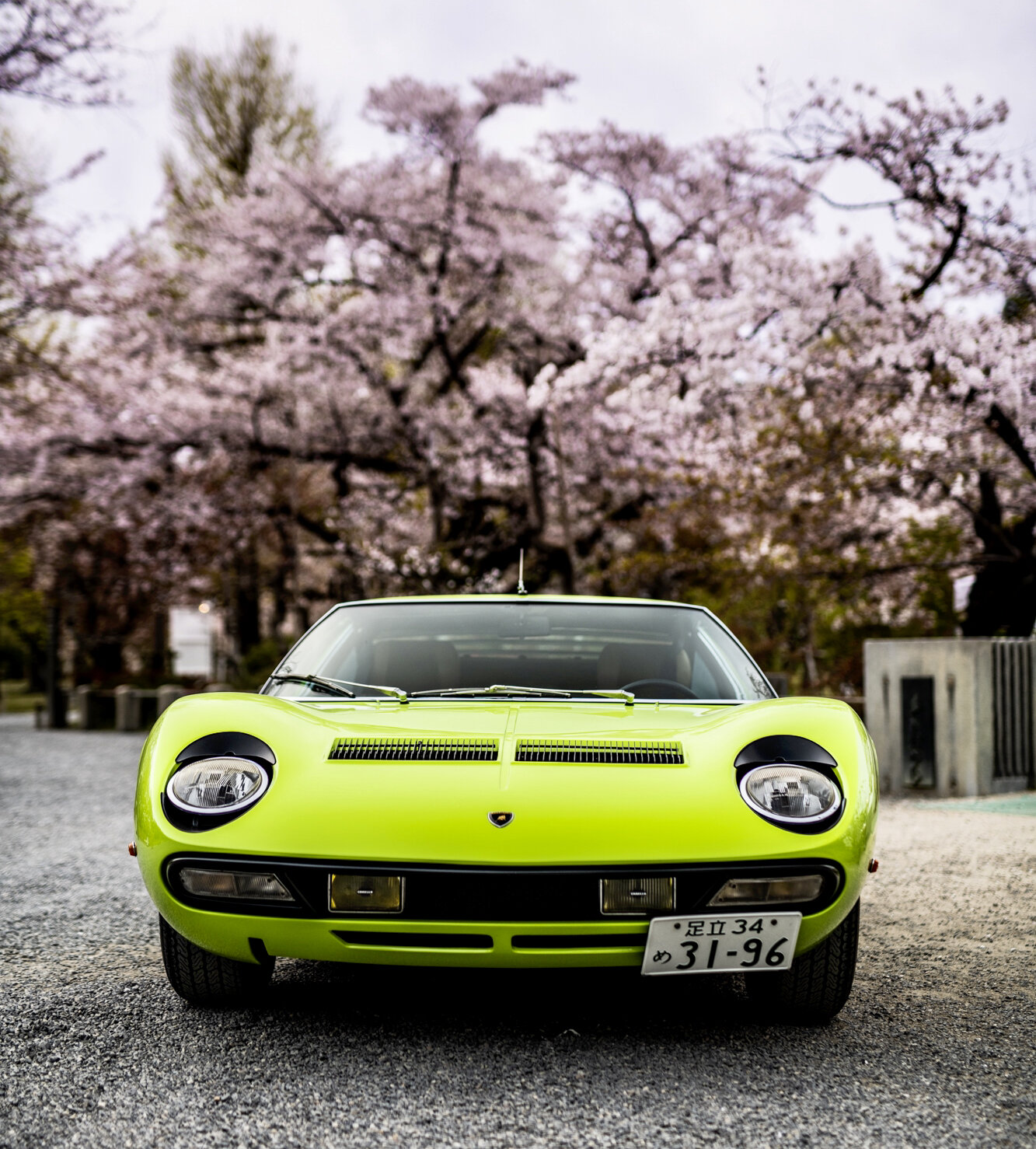50 years ago, Lamborghini unleashed the Miura SV
ByLarry Edsall - April 18, 2021
Lamborghini stunned the sports car set at the 1966 Geneva Motor Show with its new Miura, a mid-engine marvel with a V12 and styling by Marcello Gandini. The revolutionary P400 was the fastest production vehicle of its era.
A 20-horsepower bump for 1970 replaced the P400 with the P400 S, and then, in March 1971, Lamborghini’s stand at Geneva featured a new Miura, the P400 SV or super veloce (super fast). Originally intended to accompany the P400 S, on the occasion of the SV’s 50th anniversary Lamborghini notes, “as a result of the SV’s huge success on the market, it actually ended up replacing it.”
The Italian sports car producer adds, “The Miura SV, now the most sought-after production car made by Lamborghini, is considered the highest expression of the “supercar” concept of its time and the best of all the Miura versions produced.
The Miura SV went on sale in the US for $21,000. According to the Hagerty Price Guide, they now sell for $1.7 million to $2.45 million.
“Giampaolo Dallara and Paolo Stanzani, Lamborghini’s chief engineers at the time and the creators of the Miura and Miura S, confirmed that the SV version benefitted from the experience gained during the first five years of Miura production.”
While the 4.0-liter V12 in the earlier car provided 350 horsepower, the SV’s powerplant got four triple-barrel Weber carburetors and was rated at 385 horsepower and 294 pound-feet of torque, with revised lubrication and a modified transmission.
“The Miura SV was actually quite different from the other Miuras (P 400 and P400 S), both technically and stylistically,” Lamborghini reports. “While maintaining the same general layout, with a 4-liter 12-cylinder transversely mounted rear-mid engine, the SV had a stiffer chassis, with certain strategic reinforcements, a revised rear suspension system with different anchor points and arms, and an almost 130 mm wider track.
“It was also fitted with different size tires between the front and rear, with the rear wheels increased from 7 to 9 inches and equipped with 255-section tires. The design of the rims was revised, too, to make them sportier, and most SV customers ordered them with the striking gold finish.”
Also revised was the exterior design, done again by Gandini. The rework included a revised hood with new air intake for cooling the radiator, wider rear fenders and new tail lamps.
“One of the most important visual changes to the Miura SV was in fact the absence of the famous ‘eyelashes’ around the headlights,” Lamborghini added in its 50th anniversary of the SV news release.
“There was no real technical reason for this esthetic modification; it was simply that Ferruccio Lamborghini, who knew very well that the assembly and perfect finishing of the eyelashes was a highly complex and time-consuming step, wanted to reduce the Miura’s production time.
“However,” the company notes, “for his own personal Miura SV – the only one to officially adopt this specification – he asked for the eyelashes around the headlights to remain.”
Also updated was the SV interior, with expanded use of leather and chrome.
Lamborghini points out that the Miura SV’s top speed was just above 290 km/h (nearly 180 mph) “and from a standing start, it covered one kilometer in just under 24 seconds – record performance results back then.”
Only 150 units of the SV were produced, though in 1975 a final one was manufactured for Formula 1 racing team owner Walter Wolf (the Wolf SV is displayed at the Lamborghini Museum in Sant’Agata Bolognese).
“The withdrawal of the Miura SV from production marked the end of an era in which speed and sinuous lines predominated,” Lamborghini concluded, “and in which a small group of young men, driven by an innate passion and blessed with great technical skills, were able to create what for many was, and still remains, the most beautiful car ever produced in series.”
Courtesy of Classiccars.com






